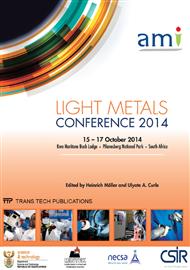p.112
p.120
p.126
p.133
p.143
p.152
p.160
p.169
p.177
High Quality Non-Ferrous Die Castings Dependence on Die Design – A Review of the Use of Die Filling and Casting Solidification Simulation Results for Successful, Effective and Practical Die Designs
Abstract:
High Quality Cost Effective Die Castings rely to a large extent on successful, effective and practical die design. A review is carried out of some runner and gate designs which resulted in successful high quality castings. Some High Pressure and Gravity cast casting are evaluated. Simulation results for evaluating the impact on the flow during filling due to Runner Geometries, Gate Geometries and positions as well as venting, overflows or risers are discussed. Thermal intervention through the use of internal thermal channels are also evaluated through the use of simulation results. The paper centres on a discussion of analysis of simulation results, predicting defects which impact on some aspects of surface finish and porosity. A case study is presented showing the value of following and taking heed of lessons learnt from simulation results, to carry out die designs with reduced reliance on simulation. Index Terms: South African Foundries, High Pressure Die Casting, Computerised Fluid Dynamics Simulation, Die Design, Defect Reduction.
Info:
Periodical:
Pages:
143-151
Citation:
Online since:
October 2014
Authors:
Price:
Сopyright:
© 2014 Trans Tech Publications Ltd. All Rights Reserved
Share:
Citation:


